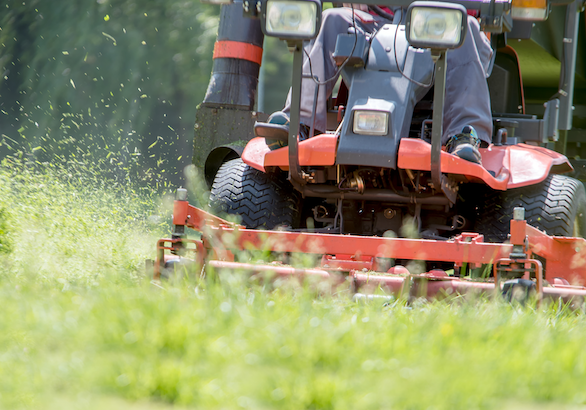11 Steps for Bidding a Landscaping Job

If you haven’t bid a professional landscape job before or if you’re still new in bidding landscaping projects, it can be a little daunting to know where to start. Below, we list 11 steps in bidding a landscaping job, making sure your bid is profitable, and landing the job.
How to Bid a Landscaping Job
Bidding a landscaping job is about more than figuring out “how much you can make” from a particular client. It also takes knowing your costs, inventory, and your crew’s availability.

1 – Get to Know Your Client’s Needs
Before starting to estimate the property, take the time to get a good idea of what your client has in mind. Nothing will lose the job faster (or waste your time more) than a landscaping bid that doesn’t include everything the client asked for. Ask questions and get clarification if you’re not sure about what they’re describing. The more details you have for the bid, the more accurate it will be—and the better and more persuasive your proposal will be.
2 – Take Measurements
Don’t eyeball it unless you either have a lot of experience doing so or have no other choice. Taking measurements will help better estimate costs for things like mulch, ground cover, sod, gravel, paving stones, or other materials sold by the square foot or cubic foot. Without accurate or close-to-accurate measurements, you may end up with too little (or too much) product, and will have mis-bid labor and costs, which could result in losing the job before it starts or in making the job less profitable.
This can be done with a tape measure, the time-old “footstep measurement,” or using a landscape bidding tool such as Arborgold that uses a Google Maps API to highlight and estimate square footage within a property.
3 – Detail Materials Needed
This is one of the most important parts in bidding a landscape job because your accuracy determines whether or not your project will be profitable. You should have detailed knowledge of how much your current inventory costs, how much any materials you need to order will cost, and have a standard for your markup, if any. If you don’t have the costs yet, don’t send the quote until you have them—but don’t wait too long or you might lose out to a competitor! A landscape management software such as Arborgold can be extremely helpful in this process automatically calculating inventory and material costs as you’re writing up your landscaping bid.
4 – Draw Your Design
While a drawing may not always be 100% necessary for a landscaping bid, it can make a huge difference in establishing professionalism and trust with the client and in ultimately landing the job. If you don’t have a landscape artist on staff capable of drawing a rendering of the project, it is usually worth it to invest in a CAD tool or finding a landscape management software that includes one. This drawing will not only help to make sure you and your client are on the same page with the project, but it will also help you make sure you’re accurately costing the job and can help your team execute the job after you land it.
5 – Estimate Labor & Establish Equipment
Estimate the number of hours and crew members you will need to complete the landscaping project and their rates. Also include any equipment that will need to be used and rental fees if you don’t own the equipment. Make sure to figure in any gas and transportation costs.
6 – Predict a Timeline
Based on your labor availability, inventory, and materials that will need to be ordered, come up with a general idea of how long the job will take and when you expect your crew will be able to start. You can choose to communicate this in the bid to your client or can put it into the contract once the bid has been approved.
7 – Outline the Project Budget for the Client
After you’ve estimated all your costs, it’s time to prepare the bid for the client. Make sure you will be turning a profit on the project by subtracting all of your projected costs from the price you provide in the bid. This is the ultimate determinant of whether or not your project will be profitable.
Write the proposal up in a clear, professional way so your client can see at-a-glance the total cost of the project, while being able to see a cost breakdown.
8 – Establish Your Contract
Your contract is also an important part of creating your landscaping bid. That’s because your contract will detail certain clauses such as whether you can increase the cost of materials by up to 10% if the actual cost is more than anticipated, whether payment is required partially or in-full before the project begin, and details for how change orders will be managed.
9 – Add Finishing Touches
Depending on the level of professionalism you’d like to present, you may want to include a cover letter, a brochure, or other information about why your client should choose your company for the job in your landscaping bid. Some landscape software tools even create a dynamic, attractive flip-page pdf landscaping job proposal.
10 – Send it Off
Once you’ve created your landscaping bid, it’s time to send it off! The sooner you can get your bid into the hands of your prospective client, the better. Optimally, you could provide the bid on-site and receive the signed contract on-the-spot, but unless you have an awesome landscape bidding tool, this may not always be possible. Instead, try to get the estimate over to your prospective client by the end of the day, or within 24 hours.
11 – Follow Up
After you’ve sent your proposal, make sure to follow up! This will give you the opportunity to reestablish your professionalism and be known as the landscape company who’s going to be responsive, engaged, and easy to work with. It also gives you the opportunity to revise your bid if it seems like you may be underbid by a competitor.
Get Started
Would you like to see how Arborgold can help simplify the landscape bidding process while creating professional, accurate quotes? Click “Take a Tour” to explore the features today!
Share this resource



